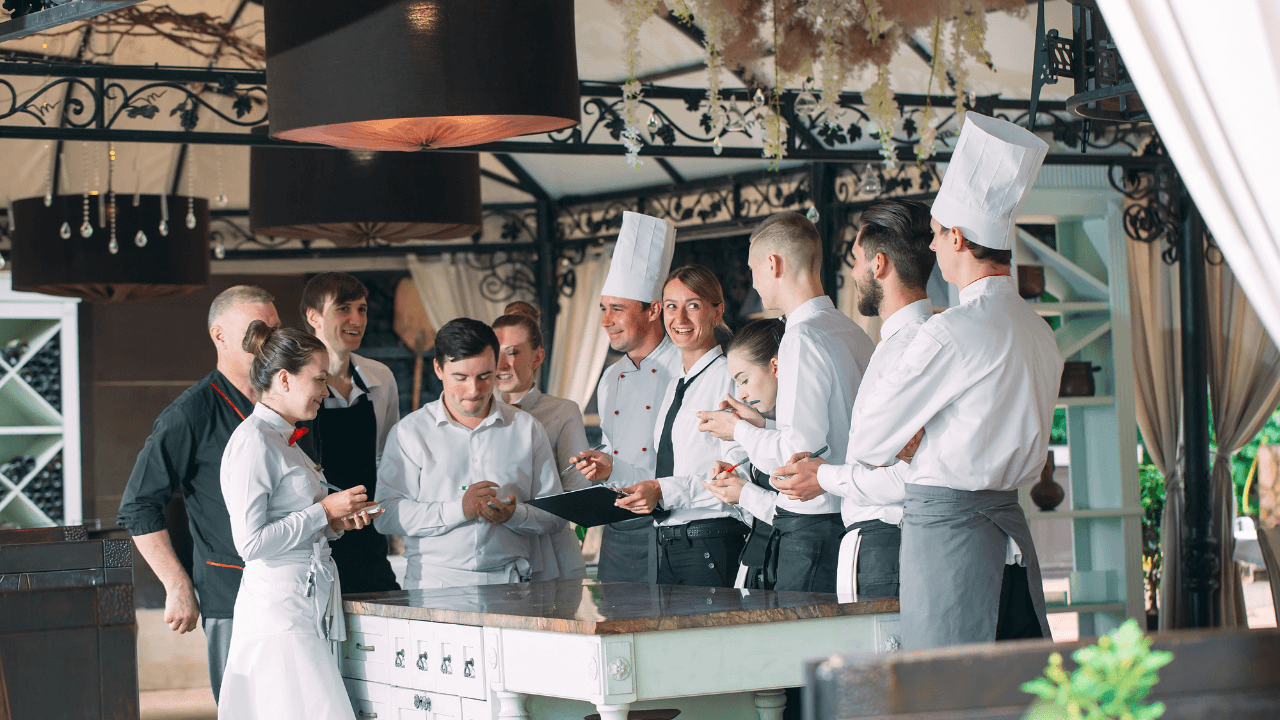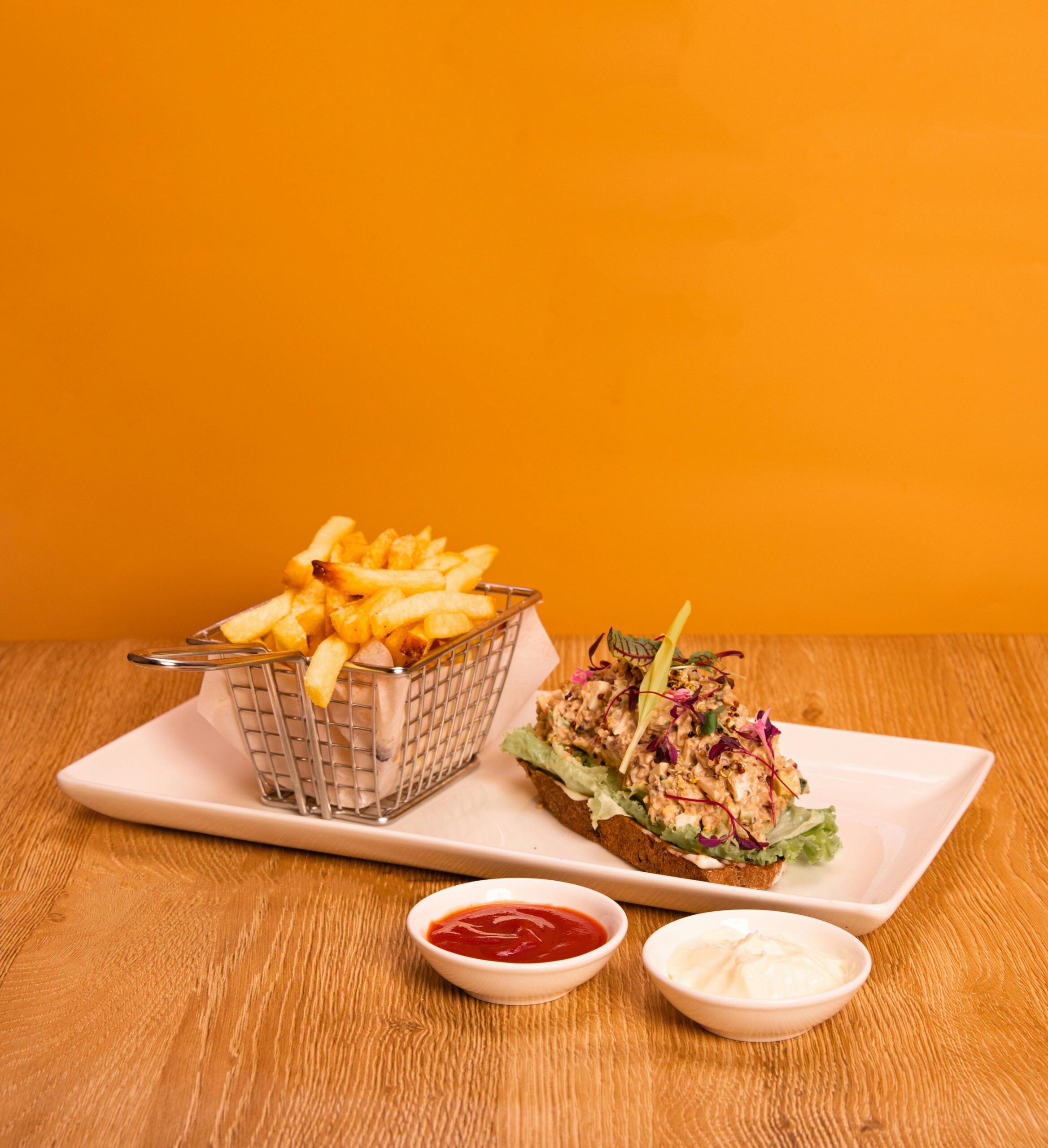- What is a Restaurant Business Plan, and Why Is It Important?
- What are the Features of a Restaurant Business Model?
Remember the first time you opened the doors of your restaurant?
That kind of feeling is hard to replicate.
The closest feel-good emotion could be witnessing your restaurant expand and grow as the years go by. However, this requires careful initial planning by adopting a resilient restaurant business model.
So what does it take to reach more heights in a couple of years?
In this article, we’ll cover what kind of business model is best suitable for your own restaurant, be it a franchise or an independent one, and how to ensure you’re carving up the right path to success.
What is a Restaurant Business Plan, and Why Is It Important?
A restaurant business plan is a comprehensive document that outlines the details and strategies for starting and operating a restaurant.
It serves as a roadmap for the restaurant’s development, providing a clear vision of its goals, target market, competitive landscape, operational processes, financial projections, and marketing strategies.
A well-crafted restaurant business plan is crucial for several reasons:
Clarity of Vision
A business plan helps the restaurant owner define the concept, mission, and values of the restaurant. It outlines what the restaurant aims to achieve, the type of cuisine it will offer, its ambiance, and its unique selling points. This clarity of vision guides all decisions and actions related to the restaurant’s development.
Business Strategy
The plan details the overall business strategy, including the target market, competition analysis, and positioning within the market. It helps the owner understand their competitors’ strengths and weaknesses and identify opportunities for differentiation.
Operational Guidelines
The business plan outlines the day-to-day operations of the restaurant, including staffing requirements, roles and responsibilities, supply chain management, kitchen processes, and customer service standards. This ensures that everyone involved in the business is on the same page regarding operations.
Financial Projections
The financial section of the business plan includes startup costs, operating expenses, revenue projections, and potential profit margins. It helps the owner assess the feasibility of the restaurant, secure funding from investors or lenders and set realistic financial goals.
Marketing and Sales Strategies
The plan outlines the restaurant’s marketing and advertising strategies, including how to attract and retain customers. This includes branding, social media presence, promotional activities, and customer loyalty programs.
Risk Management
A well-prepared business plan considers potential risks and challenges the restaurant might face. This includes market fluctuations, changes in consumer preferences, supply chain disruptions, and regulatory issues. By identifying these risks, the owner can develop contingency plans to mitigate their impact.
Guidance for Growth
As the restaurant progresses, the business plan can be used as a reference to track the actual performance against the projected goals. It provides a framework for decision-making and adjustments to the business strategy as needed.
Attracting Investors and Lenders
If the restaurant owner is seeking funding from investors or loans from lenders, a well-structured business plan is essential. It demonstrates professionalism, thoroughness, and a clear understanding of the business’s potential.
What are the Features of a Restaurant Business Model?
A restaurant business model comprises various components and features that define how the restaurant operates, generates revenue, and delivers value to its customers.
Let’s assume there’s a restaurant A that’s trying to apply a business model.
Here’s how the features of a restaurant business model could be tailored to them:
1. Value Proposition
Restaurant A distinguishes itself by curating an exceptional farm-to-table dining experience. With a dedication to using locally sourced, organic ingredients, every dish on the menu tells a story of the region’s flavors, capturing the essence of sustainable culinary artistry.
2. Target Market
Restaurant A appeals to discerning food connoisseurs who prioritize the authenticity and quality of ingredients. This includes individuals who value the connection between food and its source and are willing to invest in an elevated dining encounter.
Your Inbox, Your Rules!
Tailor your newsletter with the topics you're most interested in.
3. Revenue Streams
Restaurant A’s primary revenue stream is derived from its exquisite menu offerings. In addition, they offer exclusive chef-hosted events and immersive cooking classes that provide an additional avenue for generating income.
4. Menu and Pricing Strategy
Restaurant A’s ever-evolving menu showcases dishes that reflect the season’s finest harvest. The pricing structure reflects the premium quality of ingredients and the culinary craftsmanship that goes into each creation.
5. Operating Model
With an emphasis on providing a refined dining experience, Restaurant A operates as a fine dining establishment. The restaurant’s ambiance is tastefully curated to complement the exquisite culinary journey.
6. Location and Ambiance
Nestled within a historic city building, Restaurant A’s ambiance exudes a harmonious blend of rustic charm and sophistication. The open-air terrace provides an enchanting backdrop for guests to relish their culinary voyage.
7. Marketing and Promotion
Restaurant A’s brand identity is intricately woven with sustainability. Leveraging social media, partnerships with local farmers, and participation in culinary events, they amplify their commitment to eco-conscious dining.
8. Customer Experience
The staff at Restaurant A undergoes meticulous training, ensuring they deliver exceptional service and provide insights into the ingredient-sourcing narrative, elevating the dining experience.
9. Supply Chain Management
Collaborating closely with local farmers and artisans, Restaurant A ensures a consistent supply of the freshest ingredients, a cornerstone of their culinary philosophy.
10. Technology Integration
In line with modern trends, Restaurant A offers an online reservation system and employs QR code menus to provide guests with a seamless and touchless dining encounter.
11. Partnerships and Collaborations
By forging partnerships with nearby wineries and breweries, Restaurant A crafts innovative pairing experiences that further enhance the gastronomic journey.
12. Sustainability Practices
At the heart of Restaurant A’s operations lies a robust waste management system and active engagement in community initiatives dedicated to promoting sustainable practices.
13. Legal and Regulatory Considerations
Restaurant A is committed to industry standards and holds all required licenses and permits while upholding health codes.
14. Financial Projections
The startup costs for Restaurant A encompass investments in state-of-the-art kitchen equipment, elegant interior design, and comprehensive staff training. The financial outlook forecasts profitability by the second year of operation.
15. Scalability and Expansion
With a forward-thinking business model, Restaurant A envisions expansion to other cities, allowing more individuals to experience their distinct farm-to-table concept.
16. Feedback and Adaptation
Continuously seeking guest feedback, Restaurant A adapts its menu based on customer preferences and the ever-evolving culinary landscape, ensuring a dynamic and engaging dining experience.
Craft Your Restaurant Business Plan Successfully
A restaurant business plan is a vital roadmap for anyone aspiring to enter the restaurant industry. It outlines the restaurant’s goals, strategies, operations, finances, and marketing efforts.
By providing a clear vision and a structured approach, a well-crafted business plan enhances decision-making, attracts investors, and guides the restaurant’s growth. It’s an indispensable tool that ensures the restaurant’s success by addressing challenges proactively and aligning all stakeholders toward a common goal.



